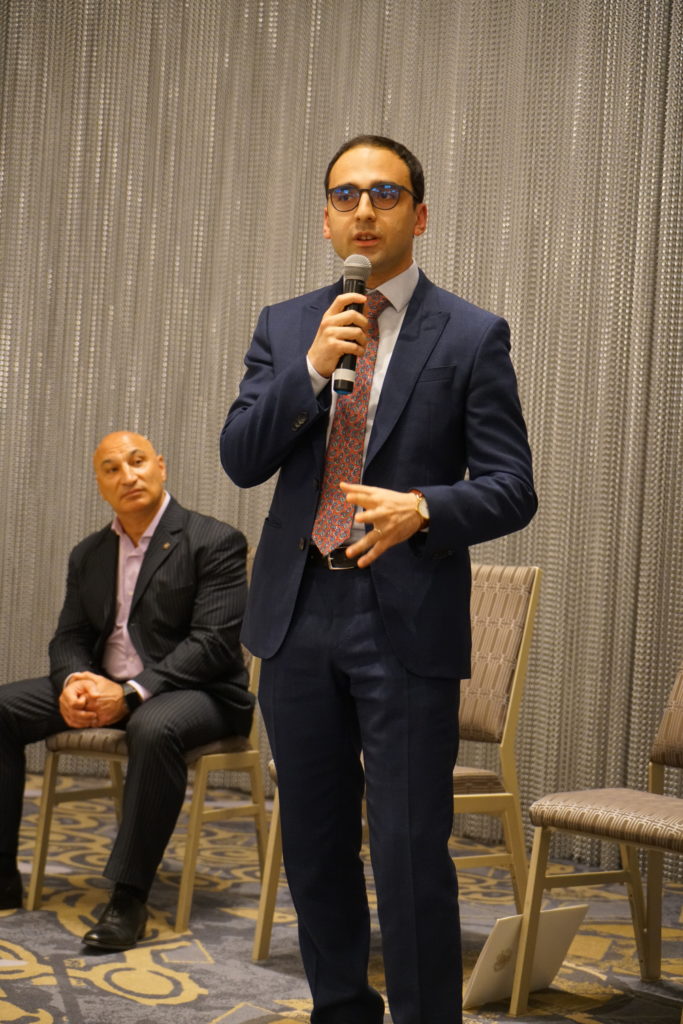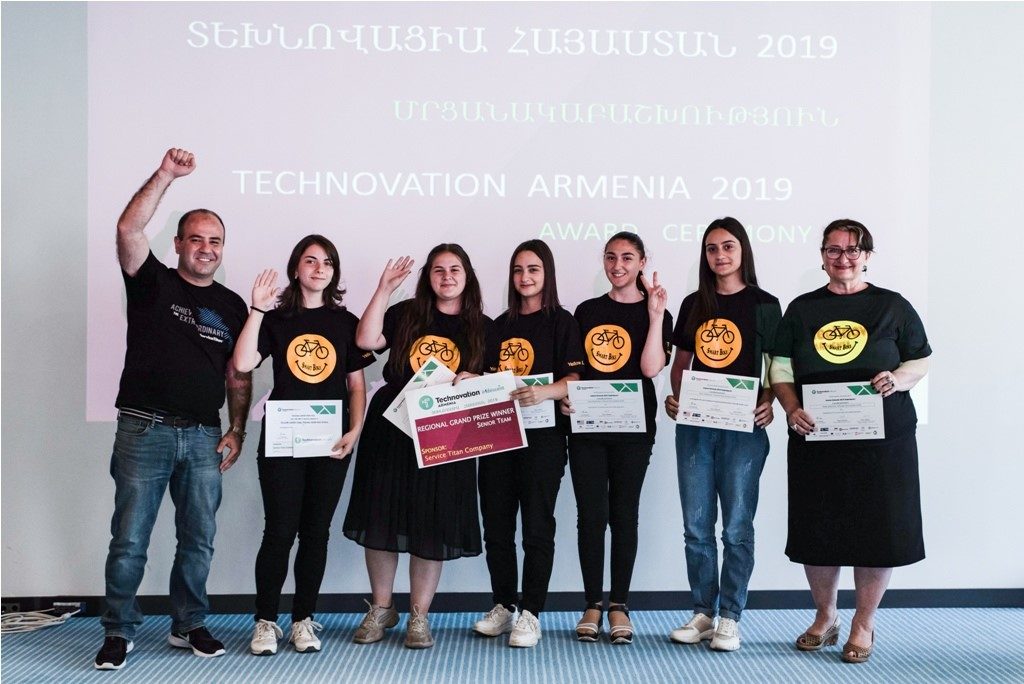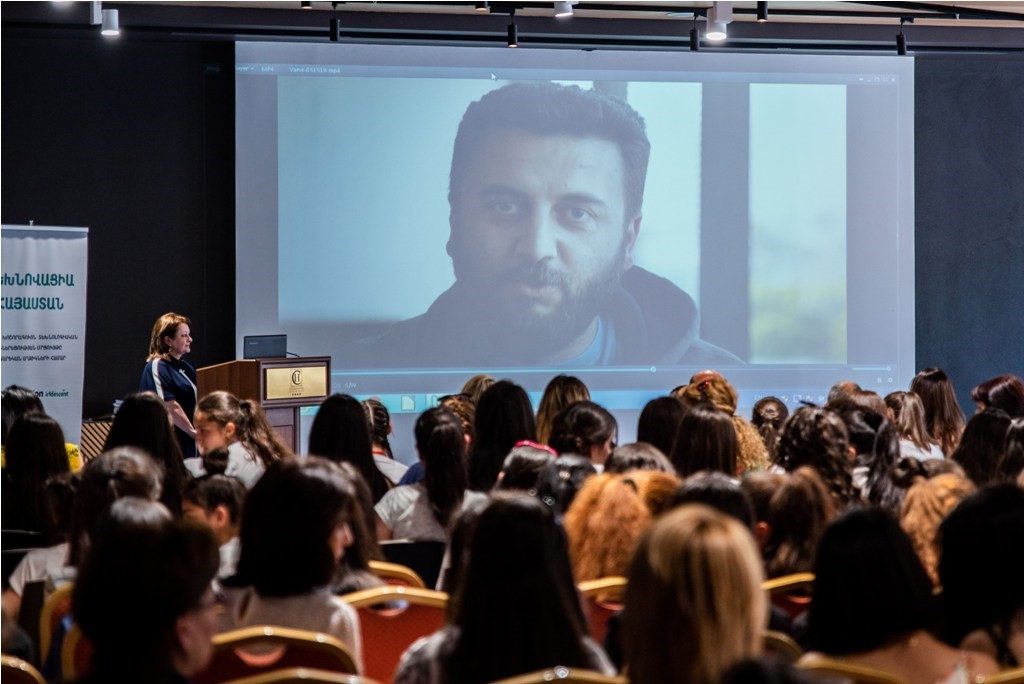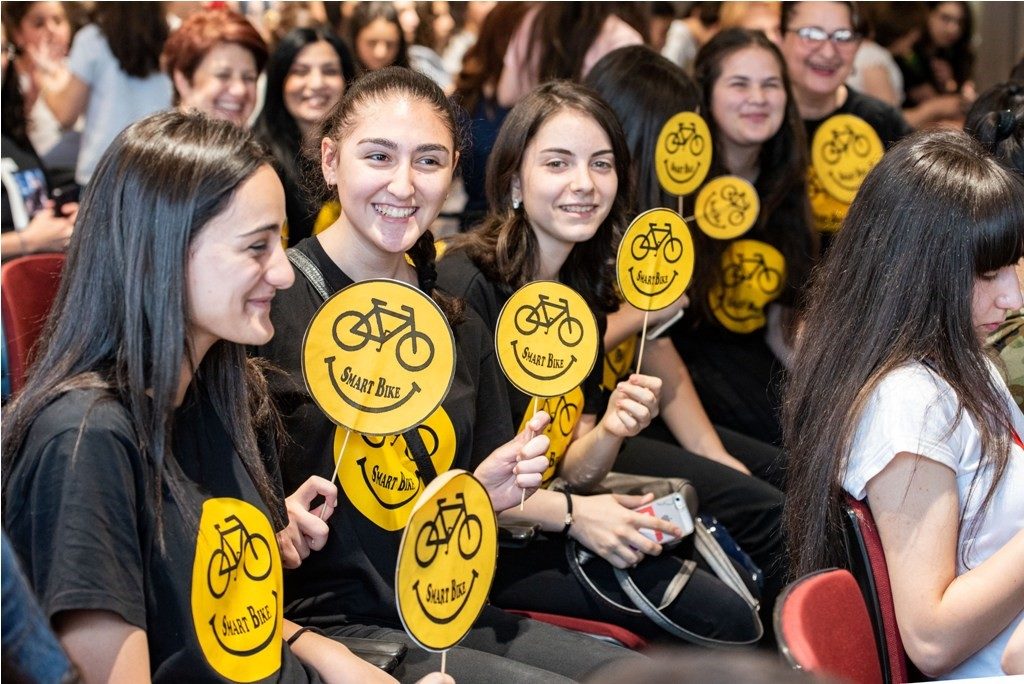CAMBRIDGE, Mass. — Deputy Prime Minister of Armenia Tigran Avinyan appeared at an evening event in Cambridge’s Sheraton Commander Hotel hosted by the Armenian Business Network (ABN) on July 18 to briefly speak and answer questions from the community.
The event was sponsored by Michael Guleserian and the Sheraton Commander Hotel, which hosted him and all visiting officials from Armenia. Avinyan and Speaker of the Armenian Parliament Ararat Mirzoyan, accompanied by Armenian Ambassador to the US Varuzhan Nersesyan, had a public event on July 19 (see accompanying article).
The visit of the officials, including various advisors, was coordinated locally by a committee composed of Anthony Barsamian, Dr. Ara Nazarian and Arman Manoukian. James Kalustian, president of the Armenian Heritage Foundation, organized a visit to Armenian Heritage Park, while Noubar Afeyan arranged for visits to the Massachusetts Institute of Technology and a meeting with MIT economist Daron Acemoglu. The officials also visited Holy Trinity Armenian Church in Cambridge and St. Stephen’s Armenian Apostolic Church in Watertown.
Barsamian made introductory remarks at the ABN event. Carolyn Atinizian welcomed Avinyan on behalf of the Armenian business community, while Sheriff Peter Koutoujian, who helped with the logistics of the visit of the Armenian delegation, briefly praised the new Armenian government and the organizers of the event.
Avinyan spoke in fluent English about the changes in the Armenian government over the last year. He said that the popular movement developed in the background of years of negative developments. When Avinyan returned from his studies in London in 2014 and met Nikol Pashinyan, he said they had a short discussion about what to do, and Avinyan told Pashinyan that even if they did nothing, the existing system in Armenia was a “big dinosaur” and history taught that dinosaurs would die eventually. So the movement of the Velvet Revolution only helped to speed its demise.
In 2018, despite the movements in the street, preventing work and school, and repeated elections, that would seem to indicate economic instability, Avinyan said the gross domestic product of Armenia grew at a rate of 5.2 percent. In the first quarter of 2019, Armenia had a 7.1 percent rate of growth, which is the highest rate of GDP growth in Europe.

In 2019, Avinyan continued, the government collected 150 million dollars more in taxes than expected. Its approach is an inclusive growth mode, which includes infrastructure and human capital. Consequently, this money was spent on growth, including on education. He said in practically every sector new initiatives are flourishing. Engineering labs, he said, already exist in 30 percent of Armenian schools already, and by next year they will be in all schools in the country. This year, health care was also expanded by the government to include all children from birth to 18 years old.
The annual GDP of Armenia is 12 billion dollars. Avinyan said that probably a group of the richest Armenians in the diaspora would have the same amount of resources. He said “We need a deep change in the way we think about our state [and] treat our state. All the Armenians in the world should feel that the Armenian state, the Republic of Armenia, is a part of them, and they are a part of that country. Because the Armenian state, the Republic of Armenia should be the center for all Armenians.” The government, he said, is ready to implement all the drastic and painful reforms that need to be done to make Armenia a strong and resilient country which will be a center for all Armenians.
Avinyan then took questions from the audience, with the assistance of Jack Antounian of the ABN. The questions were wide-ranging in nature, including agricultural reforms, education, barriers to female investors, the effect of Syrian Armenian refugees, and supporting the high-tech sector. Some concerned personal problems or proposals for business in Armenia.
At the end, instead of a question, Afeyan, in the audience, made an appeal for full participation of diasporan Armenians in Armenia, confirming that corruption has been largely rooted out with the Velvet Revolution. All the other issues in Armenia are not excuses, he said, since Armenia will not fix itself before the diaspora engages. He pointed out that the degree of access to the new government was very high—after all, the audience right there was interacting with a deputy prime minister, something which few people can usually do in other countries.
The post Deputy Prime Minister Avinyan Speaks at Armenian Business Network Cambridge Event appeared first on The Armenian Mirror-Spectator.








